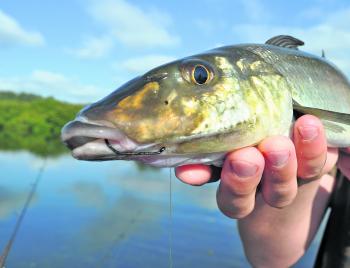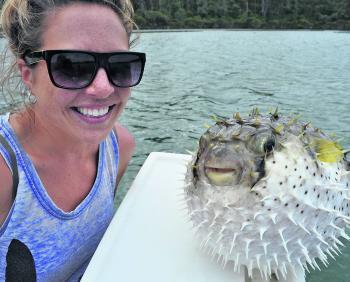The Tathra area got trashed again, with heavy rains, floods and damaging seas earlier this year, some of which will be to the advantage of anglers, but others not so.
Last month the historical Tathra Wharf was still out of bounds to anglers after suffering damage from large seas in the earlier storms. However, the effects it has had on the environment, especially the catchment of the Bega River, are all favourable to anglers. In all my years of living in this area, I have never seen the system looking or fishing so well. Deep holes in the river bed along with flood debris leaving structure with a wide open entrance to the ocean has the system fishing exceptionally.
All the species are here, with cooler water ones like trevally, tailor or luderick being more predominant at the moment, and others like flathead, whiting, mulloway and bream are also starting to show themselves, providing more action for anglers.
Also on the move are the bass in the upper reaches and the estuary perch throughout the river. Both species have finished spawning and will be wanting to put on condition after this event. Warmer days will see the bass on the chew, while the EPs may take a little more effort and plenty of moves to find a patch willing to have a crack.
While targeting these species, anglers may be pleasantly surprised when some of the sizeable dusky flathead decide to strike, and some of these fish can be exceptional. Since the closures of commercial netting in the river several years ago, this system is now renowned for its trophy-sized flathead and its increasing numbers of estuary perch.
Moving out of the river and onto the beaches, anglers are pleasantly surprised with the numbers of salmon frequenting the coast line. These fish can be seen moving along the beaches, allowing anglers a chance to sight fish them with lures. This is a great way to pursue them, providing plenty of exercise as you follow them along the beach. Mixed in with these salmon have been some nice tailor, and there has been some bream and mullet taken on bait adjacent to the entrance of the river, plus the odd small mulloway.
Around on the rocks, groper and drummer are the mainstay, with these fish responding well to baits of cabbage weed, cunjevoi and red crab. There have also been good schools of luderick that can be taken regularly on cabbage weed, with the best areas being from below the pub through to Kianinny Bay boat ramp.
Out on the ocean, the game fishing is non-existent at the moment, and should remain that way until we have a change in water temperatures. However, the reef and bottom fishing is improving daily, especially when it comes to flathead. Tiger flathead are starting to show in good numbers and should continue to do so leading right up to Christmas. These fish can be taken from about the 20m mark right through to the edge of the Continental Shelf.
It can be difficult fishing out wide, although the class of fish is a lot better and there is the added bonus of picking up other species like ocean perch, morwong, Tassie trumpeter and snapper. The close inshore reefs are producing a nice run of 1-2kg snapper and plenty of morwong. These fish seem to be scattered over most of the closer reefs so you may need to move about from time to time to find them. While you are doing so try trolling a lure for those salmon that are around. Even if you don’t like them to eat, they make first class bait over the reefs.
Reads: 2064
Whiting are just one fish thriving in the Bega River after the big flush.

Not everything you catch in an estuary is wanted, but often it can be entertaining!

It’s not only the fish that benefit from the big rain events.




